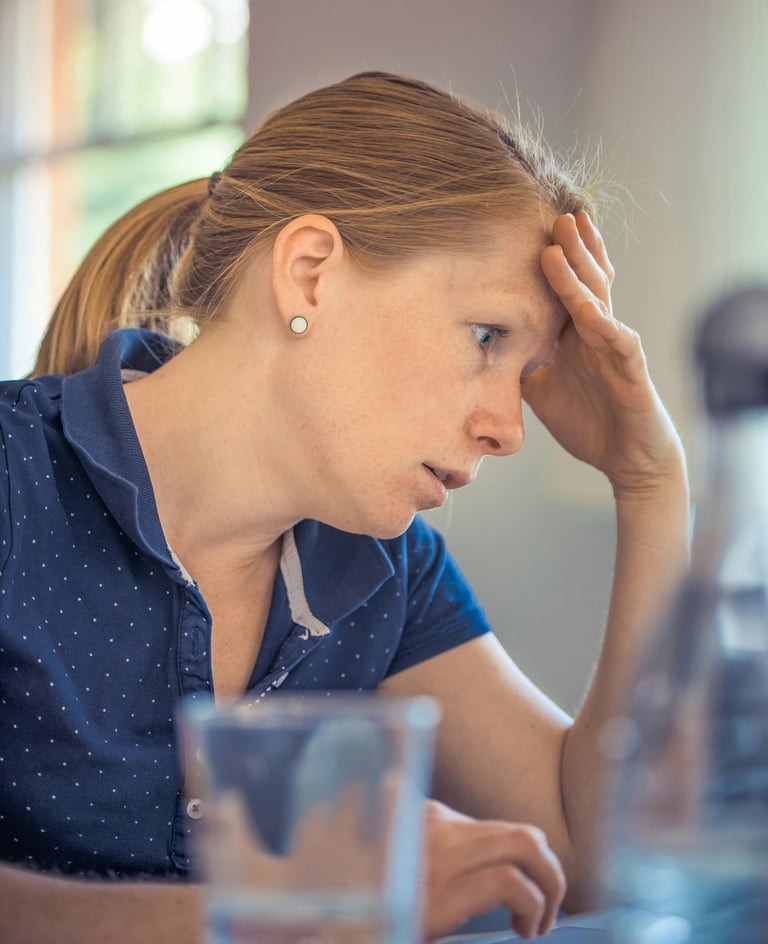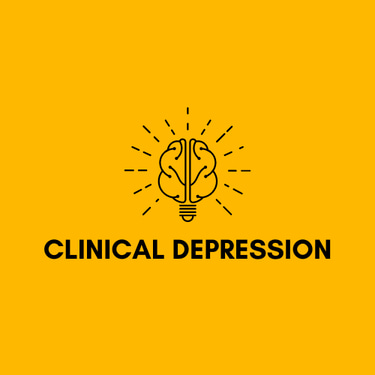For Questions: Text (833)233-0869
Understanding Anxiety: A Comprehensive Knowledge Base


Anxiety is a common mental health condition that affects millions of people worldwide. It manifests in various forms, from general worry and nervousness to severe panic attacks and phobias. Understanding anxiety is crucial for managing it effectively, and this article serves as an in-depth knowledge base to help you navigate the complexities of anxiety.
What is Anxiety?
Anxiety is a natural response to stress, characterized by feelings of tension, worry, and physical changes like increased blood pressure. It's an essential part of the human experience, helping us to stay alert and prepared for potential threats. However, when anxiety becomes chronic or overwhelming, it can interfere with daily life and lead to various anxiety disorders.
Types of Anxiety Disorders
Anxiety disorders are a group of mental health conditions characterized by excessive fear or worry. They include:
Generalized Anxiety Disorder (GAD): This is marked by chronic, exaggerated worry about everyday activities, even when there’s little or no reason to worry. People with GAD often anticipate disaster and may be overly concerned about health, money, family, or work.
Panic Disorder: Panic disorder involves recurrent, unexpected panic attacks—sudden periods of intense fear that may include palpitations, sweating, trembling, shortness of breath, and feelings of impending doom.
Social Anxiety Disorder: Also known as social phobia, this disorder is characterized by intense fear of social situations, where one might be judged, embarrassed, or humiliated.
Specific Phobias: These involve an intense, irrational fear of specific objects or situations, such as heights, flying, or spiders.
Obsessive-Compulsive Disorder (OCD): OCD involves unwanted repetitive thoughts (obsessions) and/or actions (compulsions), like handwashing or checking that doors are locked.
Post-Traumatic Stress Disorder (PTSD): PTSD can develop after a person experiences a traumatic event, such as a natural disaster, car accident, or sexual assault. Symptoms include flashbacks, nightmares, and severe anxiety.
Symptoms of Anxiety
The symptoms of anxiety can vary greatly depending on the individual and the specific disorder. Common symptoms include:
Emotional Symptoms: Persistent worry, feelings of dread, difficulty concentrating, irritability, and restlessness.
Physical Symptoms: Increased heart rate, sweating, trembling, dizziness, shortness of breath, fatigue, and gastrointestinal issues.
Behavioral Symptoms: Avoidance of anxiety-inducing situations, compulsive behaviors (in OCD), and difficulty managing daily tasks.
Understanding these symptoms is a key part of building an anxiety knowledge base that can help you or your loved ones identify and manage the condition.
Causes of Anxiety
Anxiety disorders can arise from a combination of genetic, environmental, psychological, and biological factors. Common causes include:
Genetics: Family history can play a significant role in the likelihood of developing an anxiety disorder.
Brain Chemistry: Imbalances in neurotransmitters, which are chemicals in the brain that regulate mood, can contribute to anxiety.
Environmental Stressors: Trauma, significant life changes, and stressful events can trigger anxiety.
Personality Factors: Certain personality traits, such as being prone to worry or being a perfectionist, can increase the risk of anxiety disorders.
Medical Conditions: Some medical conditions, such as heart disease, diabetes, and chronic pain, can also lead to or exacerbate anxiety.
Diagnosing Anxiety
Diagnosis of anxiety typically involves a combination of physical exams, psychological evaluations, and the use of standardized assessment tools. Doctors may ask about your symptoms, medical history, and any recent stressful events. Blood tests may be conducted to rule out other conditions that could be causing your symptoms.
Psychologists and psychiatrists often use the Diagnostic and Statistical Manual of Mental Disorders (DSM-5) criteria to diagnose anxiety disorders. This manual provides detailed descriptions of the symptoms and behaviors associated with each type of anxiety disorder.
Treatment Options for Anxiety
Anxiety disorders are treatable, and a variety of treatment options are available depending on the severity and type of anxiety.
Cognitive Behavioral Therapy (CBT): CBT is a widely-used, evidence-based treatment that helps individuals identify and change negative thought patterns and behaviors that contribute to anxiety. It involves working with a therapist to develop coping strategies and problem-solving skills.
Medication: Several types of medication can be prescribed to help manage anxiety symptoms. These include:
Antidepressants: Such as selective serotonin reuptake inhibitors (SSRIs) and serotonin-norepinephrine reuptake inhibitors (SNRIs).
Benzodiazepines: These are fast-acting medications that can provide short-term relief from severe anxiety but can be addictive if used long-term.
Beta-Blockers: Often used to manage physical symptoms of anxiety, such as rapid heart rate.
Lifestyle Changes: Incorporating healthy lifestyle changes can also significantly reduce anxiety. This includes regular exercise, a balanced diet, sufficient sleep, and stress management techniques like meditation and yoga.
Support Groups: Joining a support group can provide a sense of community and shared experience, which can be incredibly beneficial for individuals dealing with anxiety.
Mindfulness and Relaxation Techniques: Practices such as mindfulness meditation, deep breathing exercises, and progressive muscle relaxation can help calm the mind and reduce anxiety.
Coping Strategies for Managing Anxiety
Building a robust anxiety knowledge base also includes understanding effective coping strategies. Here are some techniques that can help manage anxiety:
Practice Mindfulness: Mindfulness involves staying present in the moment and observing your thoughts and feelings without judgment. It can help break the cycle of worry and reduce the intensity of anxiety.
Stay Active: Regular physical activity is known to reduce anxiety by releasing endorphins, the brain’s natural feel-good chemicals. Activities like walking, swimming, and yoga can be particularly beneficial.
Limit Caffeine and Alcohol: Both caffeine and alcohol can exacerbate anxiety symptoms. Reducing or eliminating these substances from your diet can help manage anxiety more effectively.
Get Enough Sleep: Sleep is crucial for mental health. Aim for 7-9 hours of sleep per night, and establish a regular sleep routine to improve the quality of your sleep.
Challenge Negative Thoughts: Anxiety often involves negative thinking patterns. Challenge these thoughts by questioning their validity and replacing them with more positive, realistic ones.
Break Tasks into Manageable Steps: If anxiety makes you feel overwhelmed, break tasks into smaller, manageable steps. This approach can make even the most daunting tasks feel more achievable.
The Importance of Seeking Professional Help
While self-help strategies can be effective, it’s important to seek professional help if your anxiety is severe or persistent. A mental health professional can provide you with a diagnosis and develop a personalized treatment plan that may include therapy, medication, or a combination of both.
Early intervention is key to preventing anxiety from worsening and improving your quality of life. Don’t hesitate to reach out for help if you feel that anxiety is interfering with your daily life.
Building an Anxiety Knowledge Base: Resources and Support
To continue building your anxiety knowledge base, consider the following resources:
Books: There are many excellent books on anxiety, such as "The Anxiety and Phobia Workbook" by Edmund J. Bourne and "Feeling Good: The New Mood Therapy" by David D. Burns.
Online Forums: Joining online forums and communities can provide support and advice from people who understand what you’re going through.
Mental Health Organizations: Organizations like the National Alliance on Mental Illness (NAMI) and the Anxiety and Depression Association of America (ADAA) offer valuable resources, including educational materials and support groups.
Apps: There are several apps designed to help manage anxiety, such as Calm, Headspace, and Moodpath. These apps offer guided meditations, mood tracking, and other tools to support mental health.
Conclusion
Anxiety is a complex condition that requires a comprehensive understanding to manage effectively. By building a solid anxiety knowledge base, you can better identify the symptoms, understand the causes, and explore the various treatment options available. Remember, anxiety is a common and treatable condition, and with the right tools and support, you can lead a fulfilling life. Whether through professional help or self-care strategies, taking steps to address anxiety is an important part of maintaining your overall well-being.
©2025
Clinical Depression
For Questions: Text
(833) 233-0869
